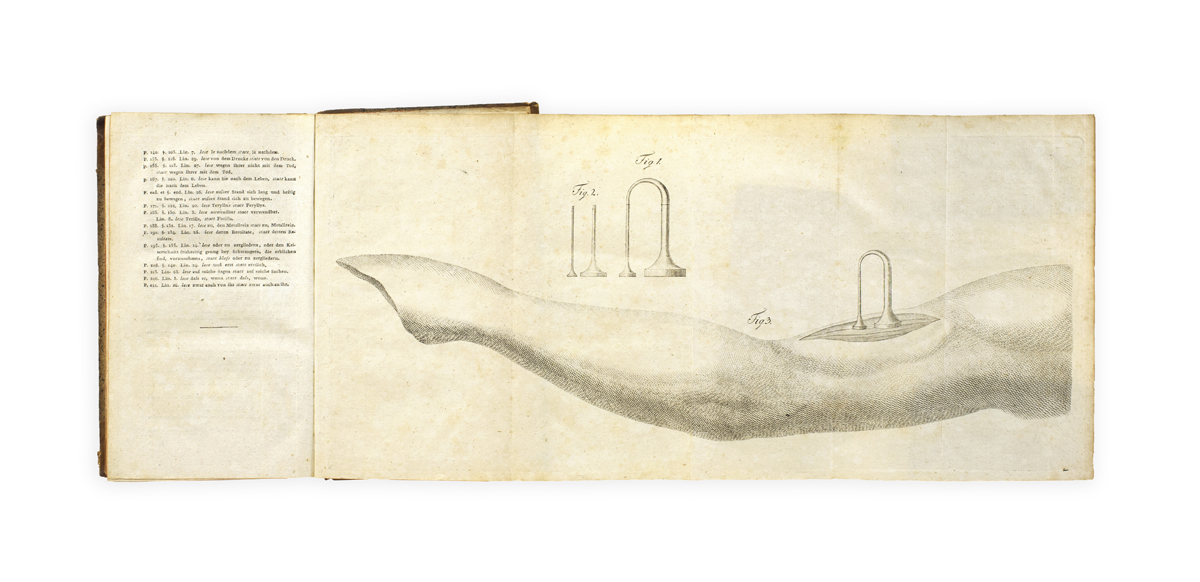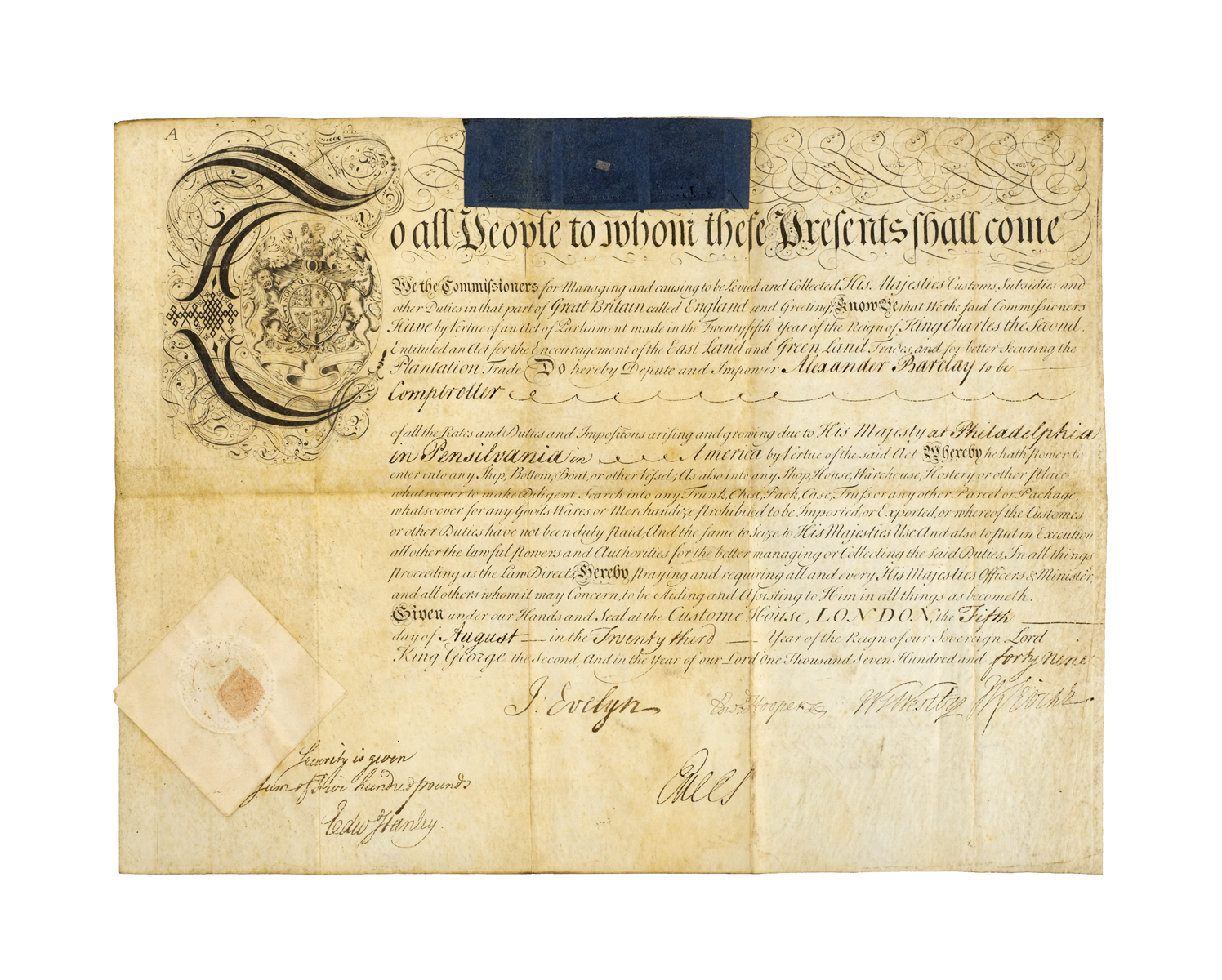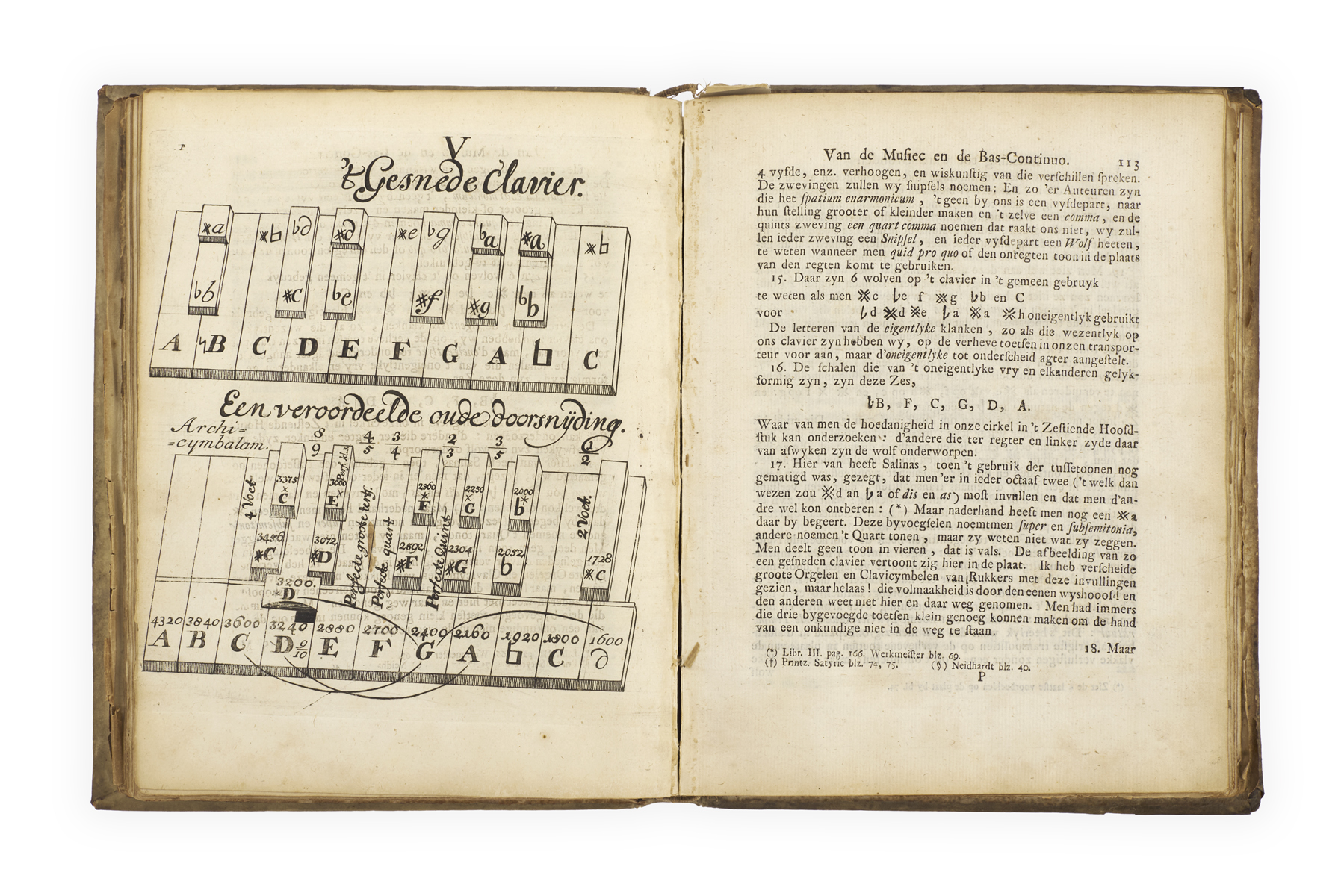
ELECTROCUTING THE DEAD
AN INSPIRATION TO MARY SHELLEY
CREVE, Carl Caspar.
Vom Metallreize, einem neuentdeckten untrüglichen Prüfungsmittel des wahren Todes. Mit einer Kupfertafel.
Leipzig and Gera, Wilhelm Heinsius, 1796.
8vo, pp. xiv, 226, [2 (errata)], with one folding engraved plate; small wormtrack to lower inner corner of first three leaves (not affecting text), uniformly browned, else clean and fresh; a very good copy in contemporary half calf with speckled sides, spine gilt-ruled in compartments with old shelf-label at head; early nineteenth-century stamp of the Gesellschaft zur Beförderung gemeinnütziger Tätigkeit to title.

Added to your basket:
Vom Metallreize, einem neuentdeckten untrüglichen Prüfungsmittel des wahren Todes. Mit einer Kupfertafel.
First edition of this uncommon contribution to the medical literature in which Creve proposes a new method of ascertaining death using a metal conductor attached to muscle tissue, part of the body of research that inspired Mary Shelley’s Frankenstein.
Carl Caspar Creve (1769–1853), professor of medicine at Mainz, was the author of numerous works on medical subjects. His method (illustrated in the folding plate at the end of the book) posits that an electric shock would function as an irritant even to those who appeared to be dead. The work opens with a number of case studies of those who either were, or narrowly avoided being buried alive, highlighting the prevalence of the problem, before offering a survey of the literature on the subject and identifying some of the conditions which could lead to the misdiagnosis of death. Creve then goes on to explain the process of muscle irritation on which his proofing method depends, with a folding plate at the end depicting the tool to be used.
It is unclear whether Creve’s proposal was ever put into practice. Five years after the publication of Vom Metallreize, however, British chemist Sir Humphry Davy would explicitly acknowledge Creve as a pioneer of galvanic experimentation in a lecture which would form the basis of his A Discourse, Introductory to a Course of Lectures on Chemistry the following year, likely ‘the only strictly scientific work Mary Shelley mentioned reading’ in her journal on 28 October 1816 whilst working on Frankenstein (Crouch, p. 35). It is likely ‘to the experiments of Humboldt, Grapengiesser, and Creve […] that Percy Shelley referred in his Preface to Frankenstein when he insisted that “the event on which this fiction is founded has been supposed, by Dr Darwin and some of the physiological writers of Germany, as not of impossible occurrence”’ (Mellor, p. 106).
Ronalds I, p. 119. See Crouch, ‘Davy’s A Discourse, Introductory to a Course of Lectures on Chemistry’ in Keats-Shelley Journal 27 (1978), pp. 35-44; Mellor, Mary Shelley (1988).

